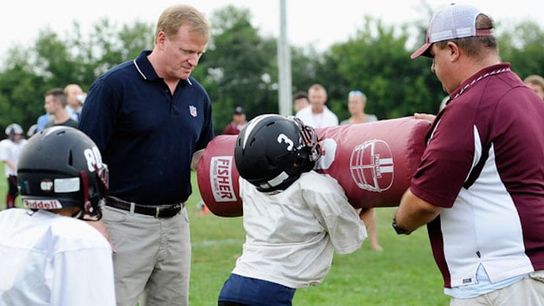Despite claims to the public and to Congress, the NFL-backed Heads Up Football program does not reduce concussions and other injuries in youth football players, according to a study obtained by the New York Times.
As the Times writes, Indianapolis-based firm Datalys provided the NFL and USA Football with a study that showed youth leagues that used Heads Up Football saw 76 percent fewer injuries, 34 percent fewer concussions in games and 29 percent fewer concussions in practices. The league and USA Football then promoted those figures generously as part of their joint effort to booth participation in a sport that has seen its numbers fall from 3 million in 2010 to 2.2 million in 2015.
From the NY Times article, "While USA Football is said to operate independently from the NFL, the league is its primary source of operating funds, and some researchers consider the two almost indistinguishable." The Times adds that in March 2014 the NFL gave USA Football $45 million "in large part to get more youth leagues to adopt the program."
However, the figures Datalys published were actually preliminary numbers. Last summer, a Datalys study published in the Orthopaedic Journal of Sports Medicine showed that only youth leagues adopting Pop Warner Football's safety guidelines -- where certain types of head-on blocking and tackling are outlawed and full-contact practice time is drastically reduced -- saw significant decreases in injuries. Youth leagues that subscribed only to the NFL-backed Heads Up Football program saw a 63 percent decrease in practice injuries and a 45 percent drop in in-game injuries, numbers that fell below the published figures. The Times also wrote Heads Up Football showed "no demonstrable effect on concussions during the study."
"Rather than looking at Heads Up Football leagues in one category, the paper instead split them into two groups: those that did or did not also belong to Pop Warner Football, a division of youth leagues that has added its own rules to mitigate injuries. Pop Warner leagues have disallowed certain head-on blocking and tackling drills and drastically reduced full-contact practice time, measures that were not a part of U.S.A. Football’s program.
As it turned out, only leagues that adhered to Pop Warner’s rules saw a meaningful drop in concussions. Leagues that used Heads Up Football alone actually saw slightly higher concussion rates, although that uptick was not statistically significant. The previously reported drops were clearly driven by a league’s affiliation with Pop Warner, not Heads Up Football."
Datalys took the blame for the misreported numbers. Said lead researched Thomas Dompier, "We’re the ones that put out the numbers. We’re the ones that kind of blew it." Added lead researcher Zachary Kerr, "The results were so compelling, we felt morally obligated to make the youth football community aware of the results."
For their part, both USA Football and the NFL pledged to use the updated, less-compelling figures moving forward. "USA Football erred in not conducting a more thorough review with Datalys to ensure that our data was up to date,” executive director Scott Hallenbeck said in a statement. "We regret the error."
